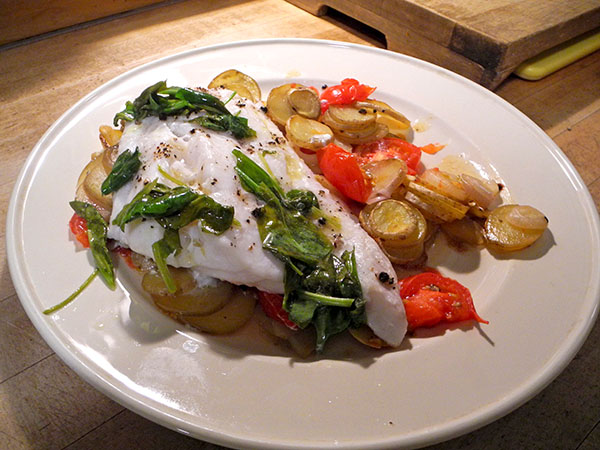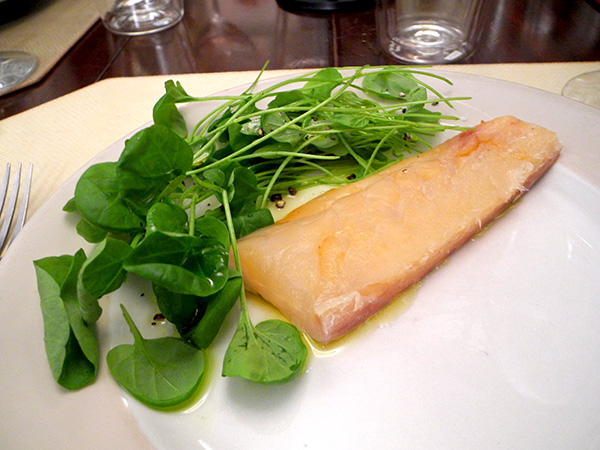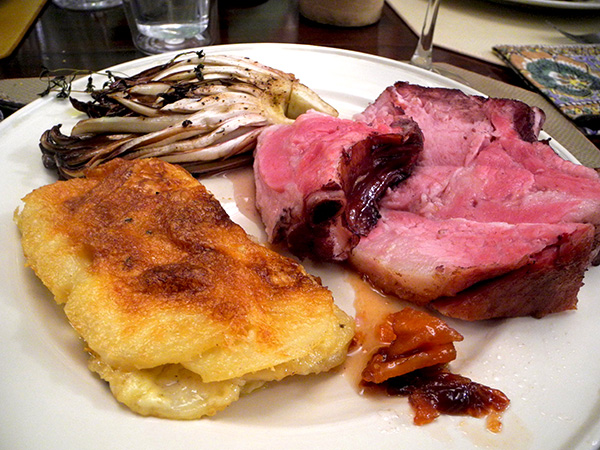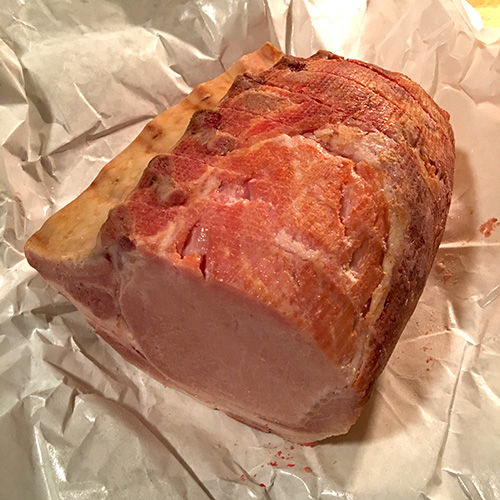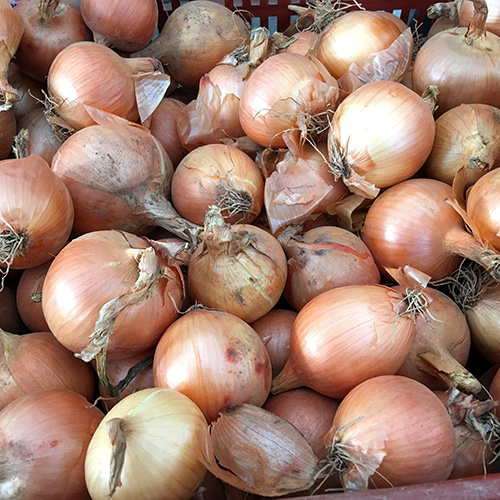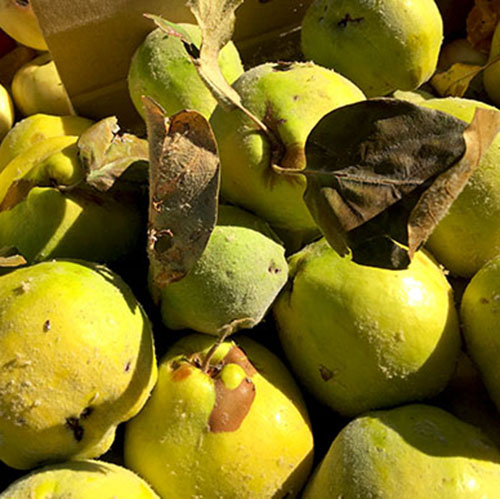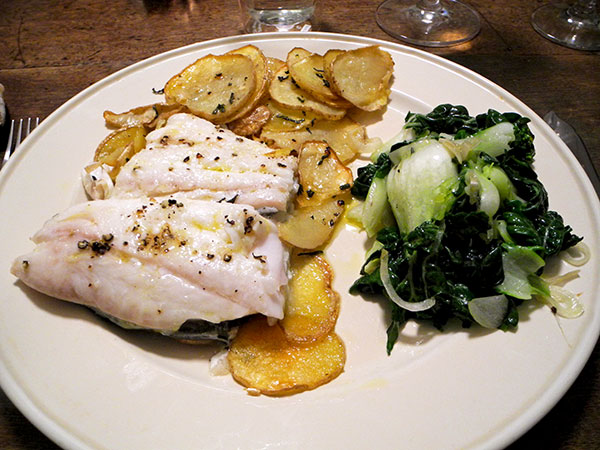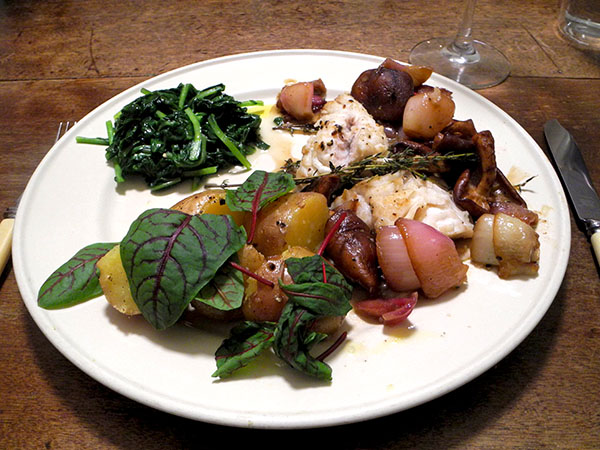
This meal was something of a surprise to me, even after I had begun cooking it. Sweet and sour haddock?
After picking out a fillet at the fishers’ stand in the Union Square Greenmarket, I had been looking for something to do with it that would not seem a repeat of what I had served the last few times we had this fish. Even while I mentally noted and was even assembling, the ingredients that went into the new treatment, I really wasn’t registering the significance of the appellation, ‘agrodolce‘. I was in something of a rush last night, and I also had some distractions, including the discovery that I didn’t have all the ingredients specified. I don’t think I had ever before put together anything with that Italian sweet and sour sauce, and I didn’t check out the translation of the word itself until later.
Because of ingredients I did, and did not, have at home, I made some substitutions and some changes in the basic recipe but it came out as strong as the original might have [at least as strong!]. I had assembled a wonderful and very rich sauce for a fish I would not have thought could survive its authority. The haddock did however, and the dish became a perfect treat for a late winter evening, suggesting a sturdy meat and potatoes entrée (with the sauce as the meat, the fish the potatoes) more than an Italian one of fish with some seasonal vegetables.
I had chosen the haddock because we had recently enjoyed everything else that was still available there by the time I arrived at the Union Square Greenmarket fish stand on Monday.
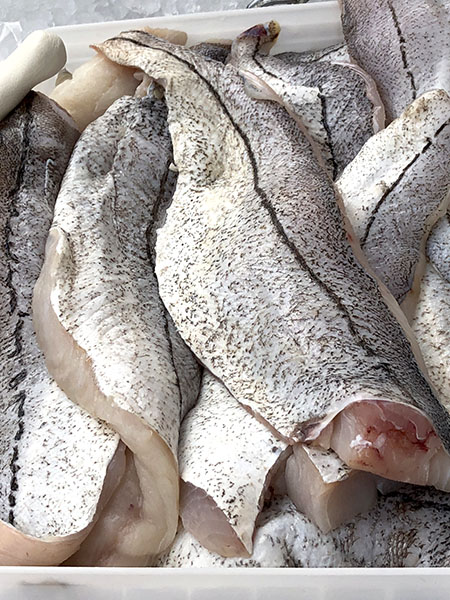
Fortunately, and somewhat accidentally, everything else I put onto the plates worked really well with the sauce I had prepared to accompany the beautiful melanogrammus aeglefinus fillet, all of which had also come from the Greenmarket in the last few days.
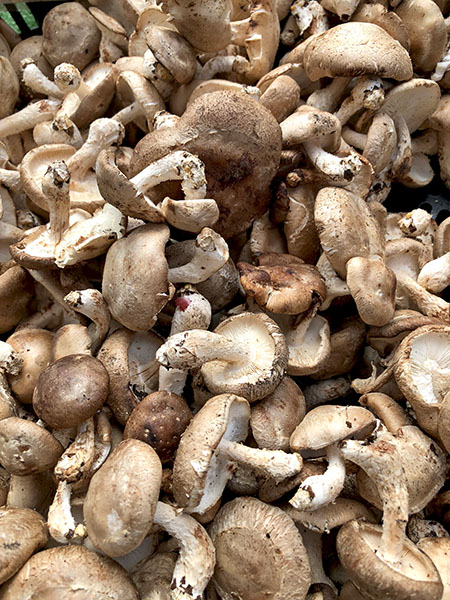
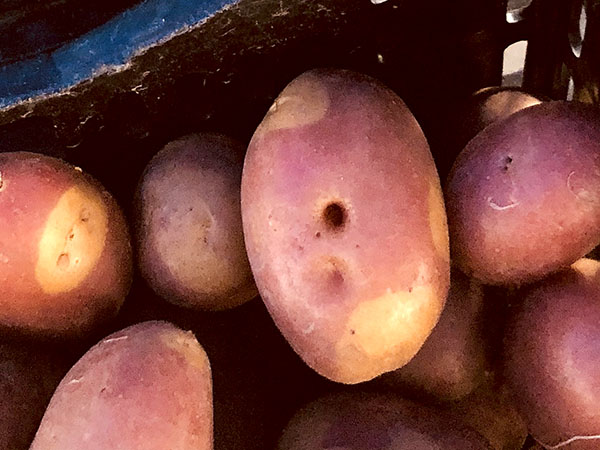

- six or 8 shallots from Norwich Meadows Farm, peeled and sliced in half, sautéed inside an oval tin-lined copper gratin pan (alternatively, an enameled cast iron pan) in 3 tablespoons of olive oil over a medium-high flame, stirring occasionally, until beginning to soften, joined by 5 ounces or so of whole shiitake mushrooms from John D. Madura Farm, a good pinch of sea salt and freshly-ground pepper, continuing to sauté both, and continuing to stir occasionally, until all were nicely browned (about 7 or 8 minutes), one third of a cup of good Spanish Rioja wine vinegar added cooked for 1 minute, scraping up any browned bits stuck on the bottom, the contents of the pan removed and set aside, the pan wiped clean with paper towels and returned to a flame, now turned high, and 4 pieces (2 large, 2 smaller) of one 12-ounce fillet of haddock, skin on, from P.E. & D.D. Seafood, already rubbed with 2 tablespoons of olive oil and seasoned with sea salt and freshly-ground black pepper, added to the pan when it was very hot, skin side up, seared for a couple minutes, the fillet sections turned over, the reserved shallot and mushroom mix and their juices arranged around the fish and the entire contents scattered with some 6 sprigs of fresh thyme branches, also from John D. Madura Farm, the pan then placed inside a 400º oven and roasted for about 12 minutes or so
- eight ‘Pinto’ potatoes from Norwich Meadows Farm, scrubbed, boiled unpeeled in generously-salted water until barely cooked through, drained, halved, dried in the still-warm vintage Corning Pyrex Flameware blue-glass pot in which they had cooked, 3 tablespoons of Organic Valley ‘Cultured Pasture Butter’ [12 grams of fat per 14 grams, or each tablespoon, of butter; American butter almost always has only 11grams, which makes a surprising difference in taste and texture], seasoned with sea salt and freshly-gorund black pepper, after which the potatoes were arranged on the plates, sprinkled with red-veined sorrel from Two Guys from Woodbridge
- one bunch/spray of very sweet and tender collard greens from Lani’s Farm, washed 3 times, drained, some of the water retained and held aside, to be added as the greens cooked if necessary, the leaves and tender stems cut roughly, braised until gently wilted inside a medium heavy vintage, high-sided, tin-lined copper pot in which 2 halved Rocambole garlic cloves from Keith’s Farm had been allowed to sweat over a low flame with some olive oil, finished with sea salt, freshly-ground black pepper, and a small drizzle of olive oil
- the wine was a California (Sonoma) white, Scott Peterson Rumpus California Sauvignon Blanc 2016, from Naked Wines
- the music was Johann Christoph Vogel‘s 1786 opera, ‘La Toison d’or’ [The Golden Fleece], Hervé Niquet conducting the Concert Spirituel Orchestra
